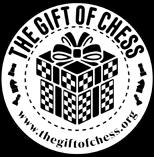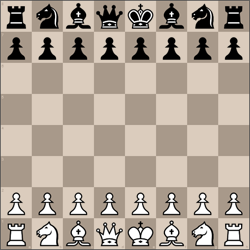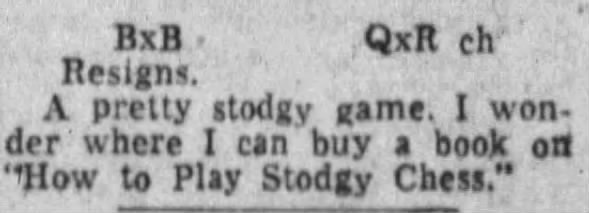Next >
Index
Next >


 Connecticut Chess 14 Aug 1949, Sun Hartford Courant (Hartford, Connecticut) Newspapers.com
Connecticut Chess 14 Aug 1949, Sun Hartford Courant (Hartford, Connecticut) Newspapers.com
Connecticut Chess
By G. E. Avery
Hartford Chess Club.
Closed Until September 9.
If you are an early riser today, and read this column before breakfast, you still have time to grab a bus, train, or your own car, and make the annual picnic of the Massachusetts State Chess Association at Norumbega Park, Auburndale. Festivities will start at 9 a. m. and continue throughout the day. If interested, take along your own lunch and chess set.
New England Championship.
While suffering from the heat the past few days, we do not realize that cooler weather is in the offing, and that chess tournaments will then be in order. The usual New England Championship Tourney will be held Labor Day week end at Attleboro, Mass. All chess players living in New England are invited to participate. The schedule calls for first round Friday evening. September 2, at 8 p.m. Three rounds are to be played Saturday, and three rounds on Sunday. Final round Labor Day morning, with adjourned games in the afternoon and banquet, in the evening. A $500 prize fund will be awarded the winners. Entry fee is $10, which includes the banquet. If you plan to attend, send entry fee promptly to Tournament Director Sven Brask at Attleboro, Mass.
Women's Chess Club.
In 1906 the Women's Chess Club of New York sponsored the first American Women's Chess Congress, held at the Martha Washington. Men's organizations helped greatly by providing encouragement and financial backing. Professor Isaac L. Rice, for whom a club and a gambit have been named, acted as president of the Congress, with Miss Foot as vice-president.
Years ago the club's roster listed “foreign honorary members,” with whom the members played by mail. Today, Mrs. Leslie Bain, who moved to Miami, Florida in 1942, is the only honorary member.
While living in New York, Mary Bain gave an exhibition each year at the first meeting of the club season, playing eight or 10 other members at one time. She also played blindfold. Once, at the Modern Chess Club, Mrs. Bain played 19 men simultaneously, winning 12 games, losing five and drawing two. She is one of the seeded players in Marshall tournaments.
Mary Bain was the first woman in this country to take part in the International Chess Tournament. Sent by the National Federation to compete in the 1937 event held in Stockholm, Mrs. Bain was one of 27 women players from as many nations. From there she went to England to participate in the Centenary Congress of the Worcester Chess Club. In the main event she won first prize over many men as well as women competitors.
Another outstanding member of the Women's Chess Club of New York is Mrs. William J. Seaman of Staten Island. Marjory Seaman is a sister of the Hartford architect, Cortlandt Luce. She held the championship of the club for 11 years, and was their president during most of that time. She holds the distinction of being the first victor of a Marshall Club match for women (1934). For years she was the only woman member of the Staten Island Chess Club, played on the organization's team, and in their tournaments had to give handicaps to some of the men.
Three years ago she organized a chess class among the boys on Emerson Hill, where she lives, teaching 10 boys from eight to 18, who voluntarily give up every Saturday morning for the game. Some are already opponents to be reckoned with, as outstanding players from men's clubs have discovered. Mrs. Seaman taught one of these boys the rudiments of chess while he lay in a plaster cast, flat on his back. She also plays with disabled veterans in two hospitals.
The present officers of the Women's Chess Club of New York are Mrs. James S. Cobb, president; Mrs. Alexander James Harper, vice-president and a former president; Miss Helen A. Ranlett, a lawyer, treasurer; Miss Elizabeth Wray, secretary.
Miss Wray is the current champion of the club, and a member of the Marshall. She played in the finals of the National Women's Tournament this spring. One of the strongest players of the club is Miss Amabel Mayo-Smith, great-granddaughter of Noah Webster. In one corner of her living room is a replica of Noah's West Hartford statue.
Other prominent members of the club are Mrs. David Willard of New York and Maryland (the Willards have many relatives in and around Hartford); Mrs. William Jamison, whose husband has charge of the moving picture department at the Museum of Modern Art; Miss Mildred Peters, whose great-grandfather, grandfather and uncle were in turn ministers at St. Michael's Church (Episcopal) for more than 100 years; Mrs. Kurt Orban, who escaped from Europe during World War I after harrowing experiences, and has lived all over the world; Mrs. Arthur Forbes of Great Neck, L. I., a former club champion, wife of a retired Army major.
There must be women in Connecticut who play chess, or would like to learn. Why not get together at the Hartford Chess Club? There is one woman member of the Greenfield Chess Club. Mrs. Lebzeltern, one in the Springfield club, Mrs. LaMontagne, who is secretary of the club, and at present only one woman member of the Hartford Chess Club, the writer of this article—Mrs. Alexander James Harper.
Game Selection.
While considering women in chess, we will give one more game played in the United States Women's Championship Tournament in 1946. By the way, received a telephone call last Sunday, asking what 0-0 meant in the game notation. If any one else needs this information, 0-0 means Castles, King side; 0-0-0 means Castles, Queen side.
Wally Henschel vs Mona May Karff
New York (1946), New York, NY USA
Indian Game: Capablanca Variation (A47) 0-1
 Chess Notes 11 Nov 1951, Sun Evening star (Washington, District of Columbia) Newspapers.com
Chess Notes 11 Nov 1951, Sun Evening star (Washington, District of Columbia) Newspapers.com





































